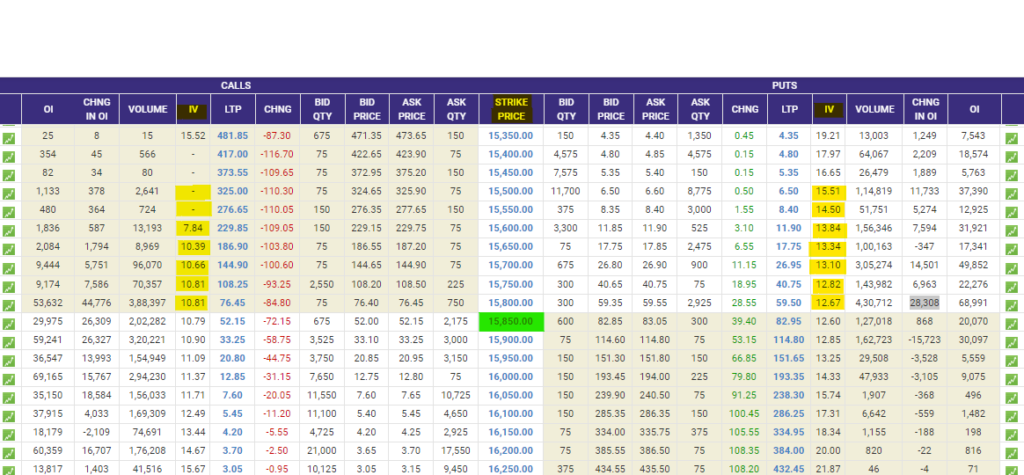NSE Option Chain is a term that is self-explanatory. Firstly, to analyse an option chain we must know what is Option. Secondly, we must also know what is the complexity associated with an Option Contract. Finally, when do we use an Option Chain?
There are two types of options contracts.
- Index Options – In India the Index options are highly liquid and falls under the list of most traded securties.
- Stock Options – However, Stock Options are a bit illiquid

When do we use NSE Option Chain?
The NSE option chain is used mostly for two indices in India NSE Nifty 50 and NSE Bank Nifty but it can also be used for Stock Options as well. The NSE option chain is a dynamic entity and therefore it changes very rapidly. It is more useful for intraday traders and even positional traders can refer to it. However, for carryforward trades or holding an option strike – Option Greeks and Hedging is a better choice.
NOTE – Option chain is a better tool for Intraday Traders. We will give you the reasons below.
Implied Volatility IV
In simple terms implied volatility is the amount of variation in the valuation of an index or stock during the option’s life cycle. Implied Volatility IV represents the demand and supply side of the market. Let us understand implied volatility with an example. Expand the Image below and zoom into it to view the IV tab.
- Implied volatility – Yellow highlights on both Calls and Puts coloumn
- Strike Price – Yello highlights in the central coloumn
- Spot Price – Green highlights Nifty 50 is trading at 15,800
Case 1: In the calls IV column if we move from 15800 to 15500 in the strike price column the IV is decreasing from 10.81 to 7.84. This decreasing trend in the call side IV (implied volatility) means that in these strikes prices LTP is trading at discount to premium. It means you can buy calls at lower prices.
Case 2: In the puts IV column if we move from 15800 to 15500 in the strike price column the IV increases from 12.67 to 15.51. This increasing trend in the put side IV (implied volatility) means that in these strikes prices LTP is trading at an extra premium. It means you will have to pay an extra premium to buy a put option in this strike price range.
Market Trend – When Puts are trading at a premium and calls at a discount, we can say that it represents a downtrend.
logical Inference
The strength of this trend will be identified by analysing Open Interest, Change in Open Interest and Volume.

What is Open Interest in NSE Option Chain?
Open Interest is the total number of open contracts on a given strike price. If the open interest of 15800 strike price of Nifty 50 on the put side is 68,991. This means that people are holding 68,991 contracts of 15800 PE or Put option.
Change in OI Open Interest or OI Addition
Take the example of 15800 PE or the Put Option column. In the Change, in the OI column, the 28,308 number represents the total number of contracts added or bought on the day of observation i.e today. Firstly, a positive number in OI indicates the market’s direction or trend the greater the number the stronger the trend. Secondly, negative numbers represent these many contracts are sold. Finally, the change in OI numbers on the call side of the column and put side OI column should be the basis of comparison in predicting the trend.

Volume
The volume tab is the most essential column of the NSE option chain. Because the intensity of the following parameters will depend upon the total volume of the day
- Open Interest (OI)
- Implied Volatility (IV)
- Change in Open Interest (OI Addition)
- Change in option Premium

